Submitted by Ka Ki Lee
Kengo Kuma rethinks the role of human hand in today’s 3D printing
France Architecture News - Apr 18, 2017 - 00:50 23885 views

Featured in Pompidou Centre's latest exhibition "Imprimer Le Monde (Printing The World)''- a collective exhibition, the Drawn-in-place system developed by the students from Tokyo University and overseen by architect Kengo Kuma criticizes the role of human in today's 3D printing world. The exhibition is part of the Mutations / Créations, a series of events focus on futurology and the interaction of digital technologies with creation, combining art, innovation and science.  Grotto II of Michael Hansmeyer and Benjamin Dillenburger in the exhibition Imprimer Le Monde. Image © Arnaud Devillard, Science et Avenir
Grotto II of Michael Hansmeyer and Benjamin Dillenburger in the exhibition Imprimer Le Monde. Image © Arnaud Devillard, Science et Avenir
The work was initially developed by Kelvin Clement (architect at Kengo Kuma and Associates) and Andre Rod as part of the graduate research Harvesting Plasticity in The Advanced Design Studies Program (T_ADS) at The University of Tokyo’s Department of Architecture. The idea is to transform food waste into a translucent biomaterial that can be used in architecture. 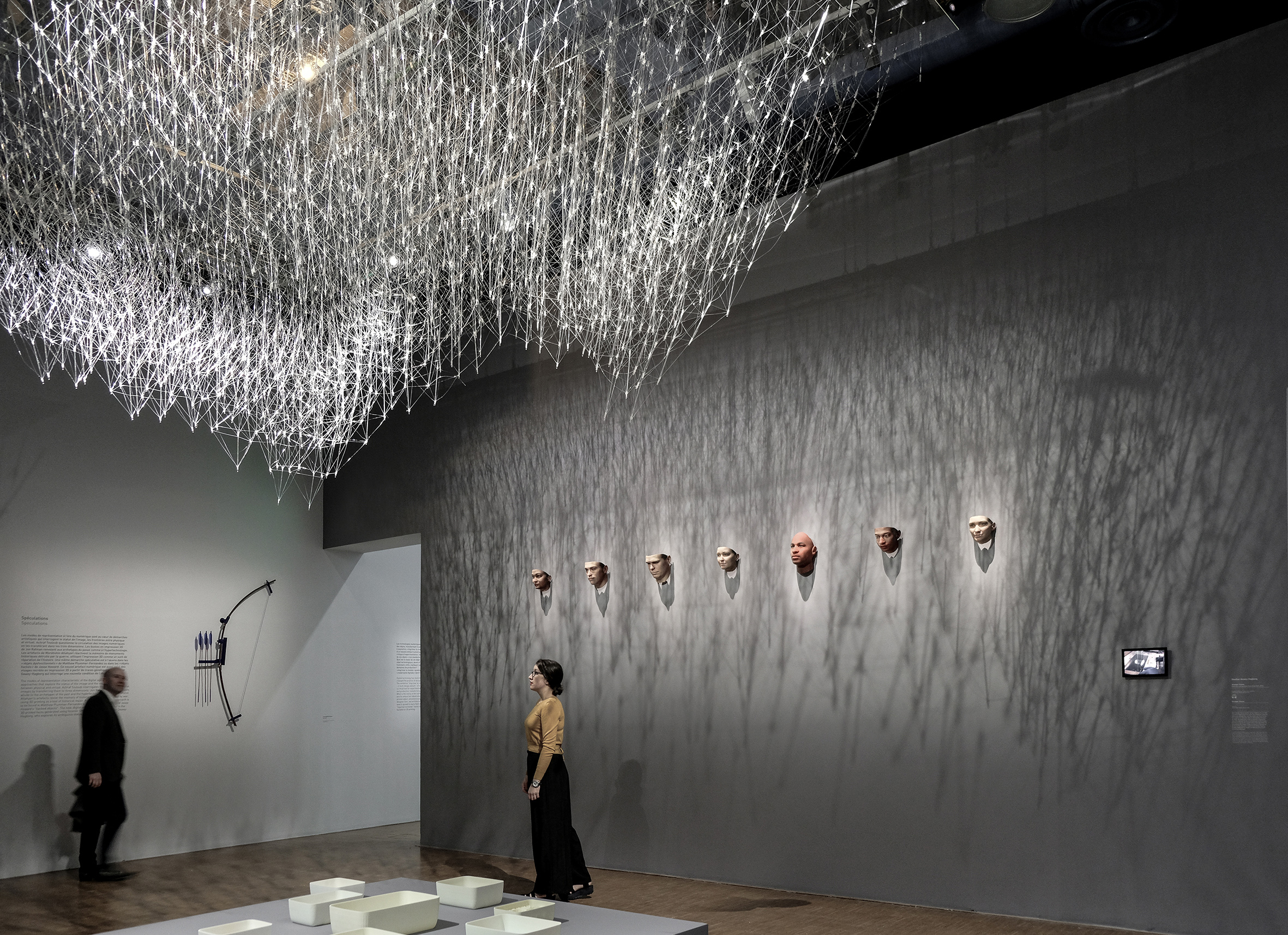 Image © T_ADS
Image © T_ADS
Later the system of 3D printing pen is developed, which allows users to hand draw in 3D structure. The pen with a digital tracking system prints out strings of thermoplastic filament. 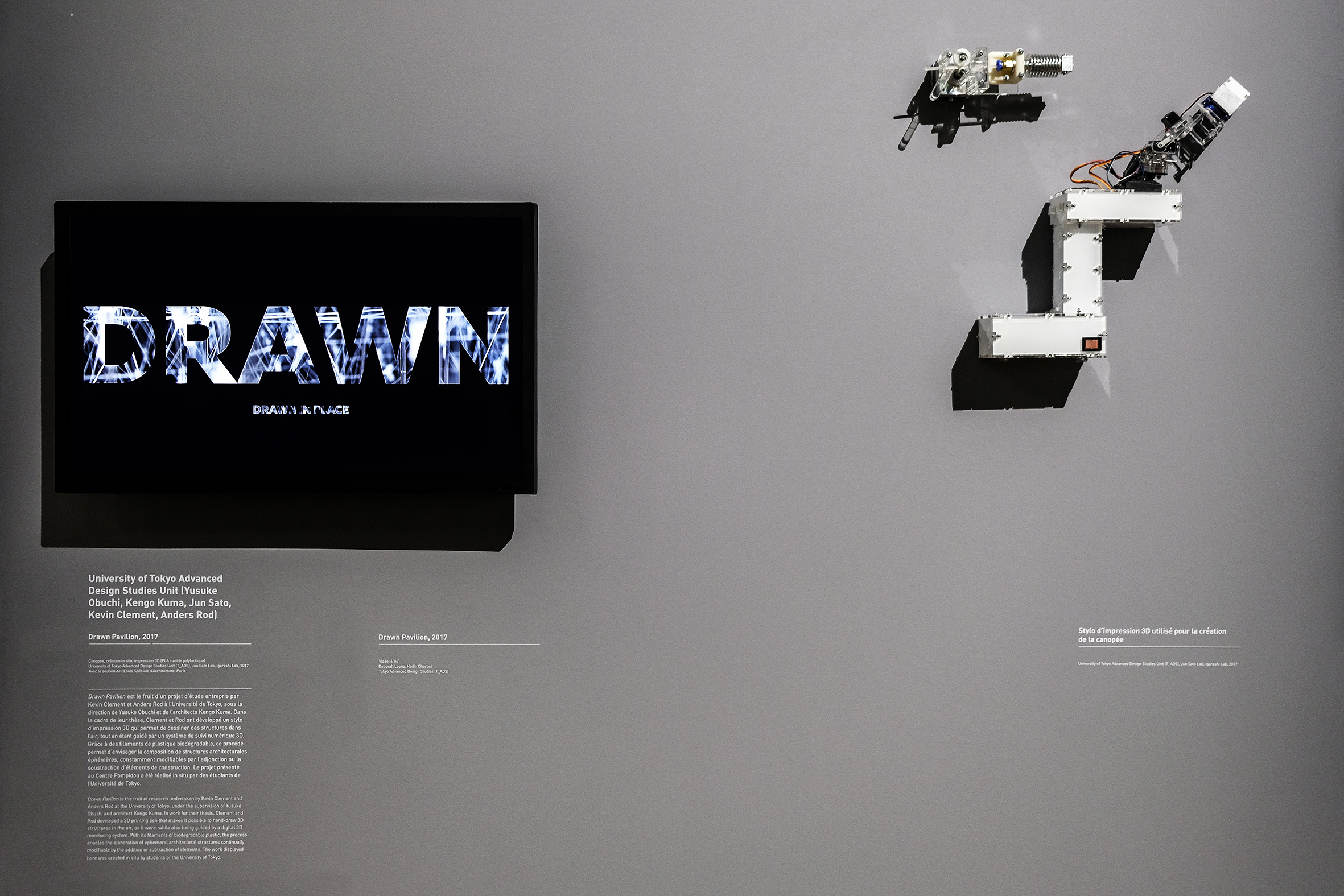 Image © T_ADS
Image © T_ADS
Drawn-in-place brings human hands back into the 3D print process. Sets of rules are predefined in the material assembly sytem but the users are allowed certain freedom on creating the form. This work gave new definitions on today's fabrication world and the book of Finnish architect and theorist Juhani Pallasmaa "The Thinking Hand: Existential and Embodied Wisdom in Architecture.''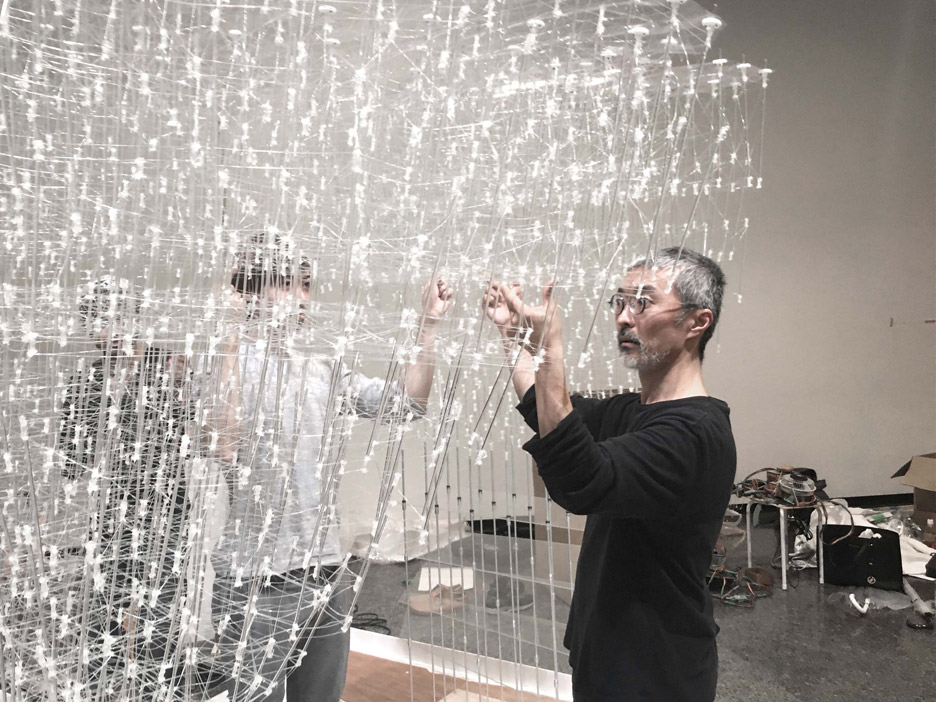 Image © Jun Shimadaa and Jan Vranovský, courtesy of Dezeen
Image © Jun Shimadaa and Jan Vranovský, courtesy of Dezeen
According to Pallasmaa, today's world emphasizes a lot on virtual and visual, the role of human body in understanding the physical world is neglected. The intimacy contacts with material and production, providing ample sensory interaction-but they are missing in today's individualised and molecular life world.
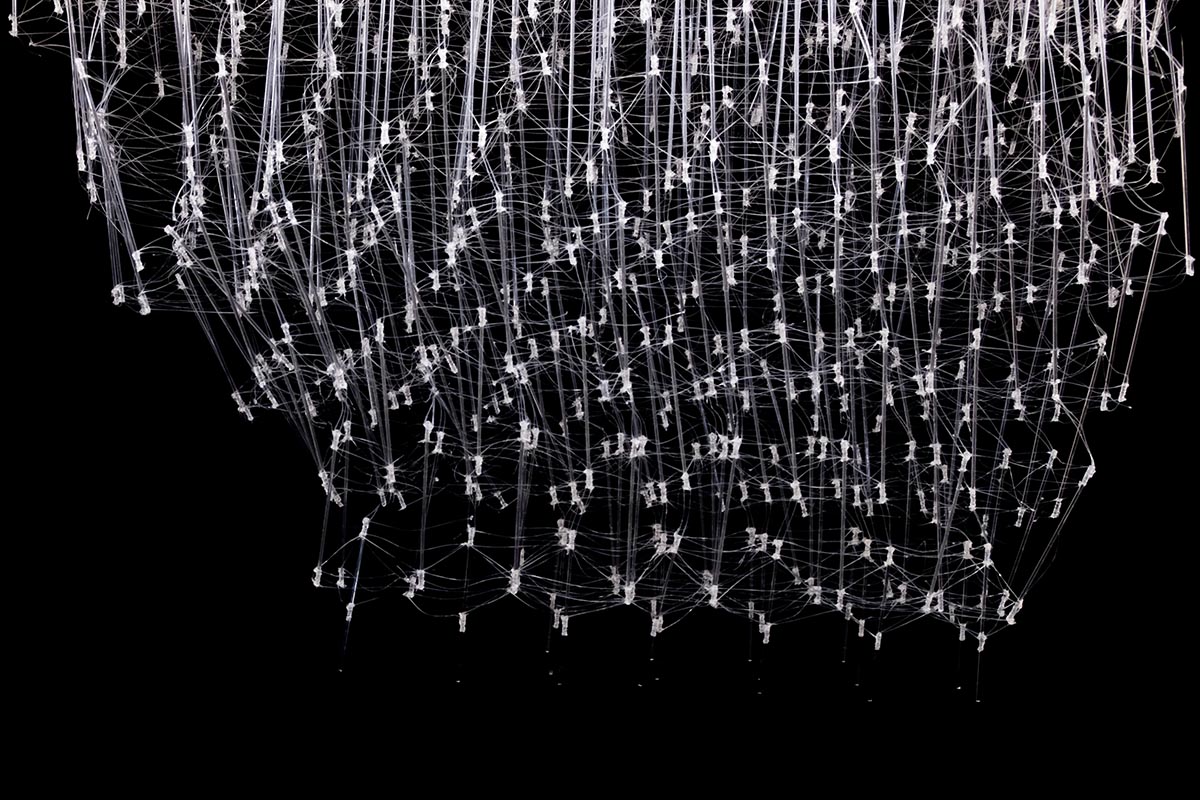
University of Tokyo Advanced Design Studies Unit (Yusuke Obuchi, Kengo Kuma, Jun Sato, Kevin Clement, Anders Rod) Drawn Pavilion, 2017, courtesy of Pompidou Centre
 Kelvin Clement preparing the installation at Pompidou Centre. Image © T_ADS
Kelvin Clement preparing the installation at Pompidou Centre. Image © T_ADS
Pallasmaa argued that a pencil in hand is the bridge between imagining mind and emerging image. In the Drawn-in-place system, the system isn't pre-designed by computer, indeed the form emerges during the users'exploration on playing with the 3D printing pen. Image © T_ADS
Image © T_ADS
In this work, the role of human is inevitable because the human body becomes a knowing entity to connect one's mind and sense on producing new knowledge. Systems are emerged within the plays between the human hand, mind and the computation of the tracking device on the 3D printing pen.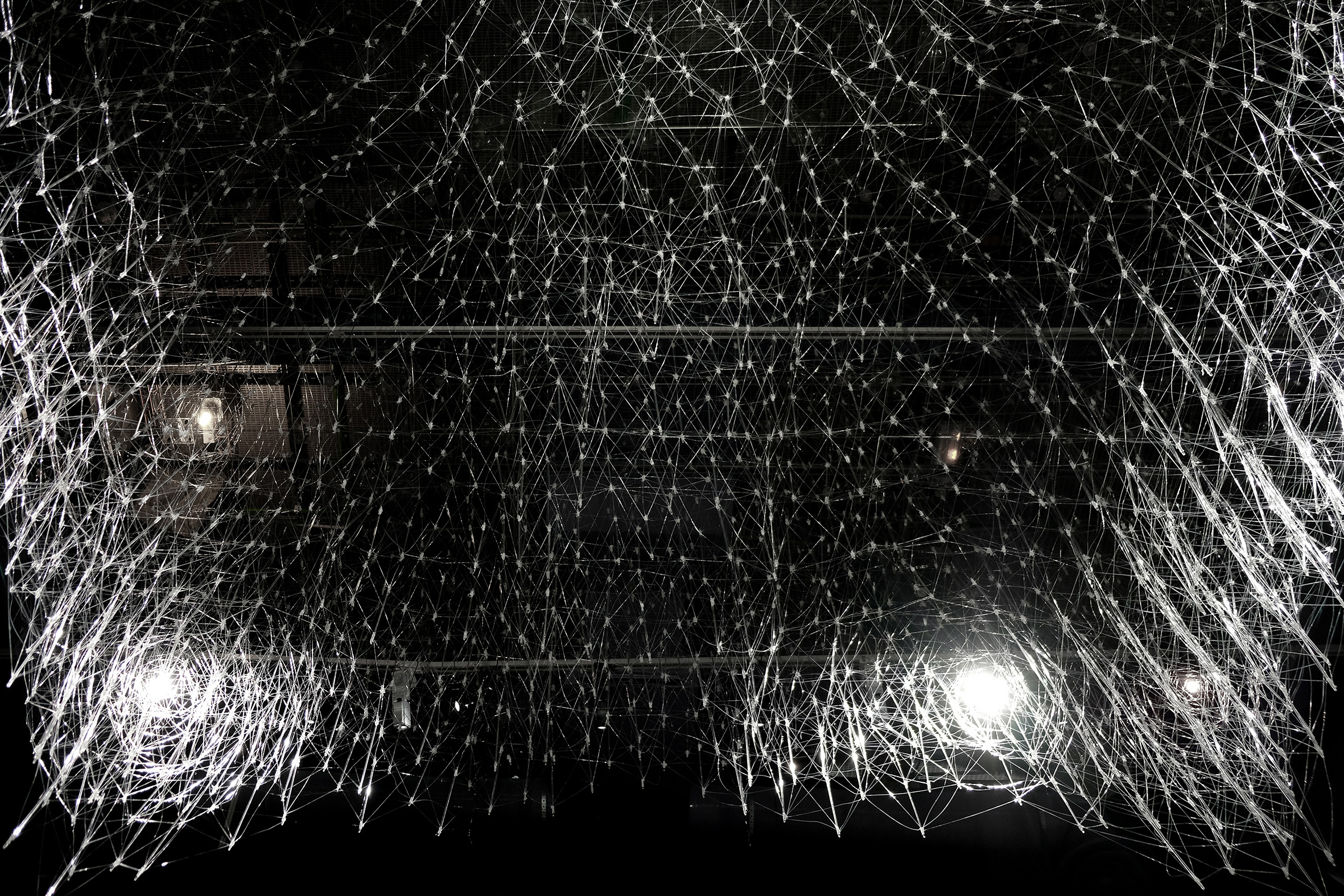 Image © T_ADS
Image © T_ADS
 Image © T_ADS
Image © T_ADS
"The computer is usually enthusiastically presented as a solely beneficial invention that liberates human fantasy. In my view, however, computer imaging tends to flatten our magnificent multi-sensory and synchronic capacity of imagination by turning the design process into a passive visual manipulation, a retinal survey,’’ stated in the book of Juhani Pallasmaa, The Thinking Hand: Existential and Embodied Wisdom in Architecture.
''The computer creates a distance between the maker and the object, whereas drawing by hand or building a model puts the designer in skin-contact with the object or space,'' he highlights in the book.
Pompidou Centre's exhibition will be on view until July 3, 2017 as well as the British designer Ross Lovegrove's exhibition and Vertigo Forum exhibition.
If you like this installation, you may want to check out the ball pen installation in Paris Saint Lazare station.
Top image © T_ADS
> via T_ADS
